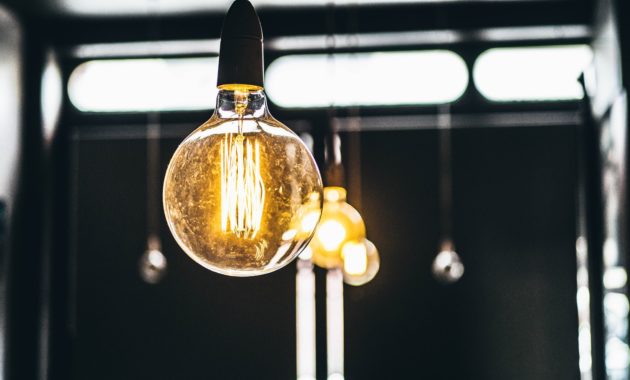
Living in the modern world means we have a lot of gadgets and appliances that use electricity.
As a result, how to reduce electricity usage is more critical than ever before.
This article provides 50 simple ways to cut bills and reduce emissions by reducing your energy consumption at home.
Reducing energy use in your home saves you money, increases energy security, reduces pollution, and reduces the cost of home renewable energy systems!
Table of Contents
- 1) Time-Based Electricity Rates
- 2) Start with an Energy Audit
- 3) Cut Out Phantom Energy
- 4) Use Dimmer Switches
- 5) Start Line Drying Laundry
- 6) Keep Your Fridge and Freezer Full
- 7) Keep Refrigerator Coils Clean
- 8) Install and Use Ceiling Fans
- 9) Get an Attic Ceiling Fan
- 10) Keep the Sun Out
- 11) Get Annual HVAC Maintenance
- 12) Clean HVAC Filters
- 13) Turn Off Your Stove
- 14) Use LED Lighting
- 15) Wash and Dry Dishes by Hand
- 16) Turn Off Dishwasher Heat Dry
- 17) Insulate Electrical Outlets
- 18) Install Storm Doors
- 19) Do Energy Saving Landscaping
- 20) Lower Your Hot Water Heater Temperature
- 21) Use a Tankless Hot Water Heater
- 22) Leverage Off-Peak Rates
- 23) Buy ENERGY STAR® Appliances
- 24) Cold Water for Laundry
- 25) Do Only Full Laundry Loads
- 26) Go Low-Flow During Showers
- 27) Use a Programmable Thermostat
- 28) Empty the Dryer Lint Trap
- 29) Buy Some Dryer Balls
- 30) Install Motion Sensors
- 31) Employ Smart Strip Surge Protectors
- 32) Use a Water Heater Timer
- 33) LED Night Lights Instead
- 34) Install Outdoor Solar Lighting
- 35) Cover Refrigerated Food and Drink
- 36) Only Put Cooled Food in the Fridge
- 37) Do Hot Water Heater Maintenance
- 38) Insulate Your Hot Water Heater
- 39) Properly Insulate Your Home
- 40) Put that Second Fridge or Freezer in the Basement
- 41) Use Lids When Cooking
- 42) Stop Preheating Your Oven
- 43) Get More Use Out of Your Microwave
- 44) Turn Your Lights Off
- 45) Do Maintenance on Ducts and Vents
- 46) Turn Off Your Refrigerator Ice Maker
- 47) Regulate Refrigerator Temp
- 48) Cut Back Ironing Time
- Cut Your Electric Bill in Half Starting Today
1) Time-Based Electricity Rates

You can save money with off-peak hours!
It’s a good idea to sign up for these programs and use electricity during the designated periods.
The programs being offered would save you money by passing the discount to you.
With rebates or reduced rates for electricity, life couldn’t be any sweeter!
The future is now.
Smart meters and home energy management systems give customers the ability to program how and when their homes use electricity, saving them money every month in utility bills.
2) Start with an Energy Audit

For a quick way to find out how energy efficient your home is, schedule an audit.
This should reveal any issues with the use of power and recommend ways to reduce costs while still feeling cosy at night.
Your utility company can perform an energy audit on your home.
This will allow you to see how much money or electricity is being wasted in the house and what changes could be made for a more efficient home with less waste of resources!
You may have unknowingly wasted precious electrical power by not using LED light bulbs, which use up about 30% less than incandescent ones.
If that weren’t enough incentive already, it’s estimated this would reduce greenhouse gas emissions by 3-5%.
A variety of utility companies offer this service as a free option.
3) Cut Out Phantom Energy

Your house is not haunted, but it sure does suck up energy like a vampire.
Seventy-five per cent of your energy use comes from electronics.
It turns out the majority of our consumption comes from appliances that are switched off.
This may be due to a lazy mentality about conserving power.
We don’t notice how much electricity and gas these items suck up until they’re not in use, but it’s still a waste!
For Instance, Toasters use 876 watts when they’re plugged in and used but consume none when they’re turned off or unplugged.
4) Use Dimmer Switches
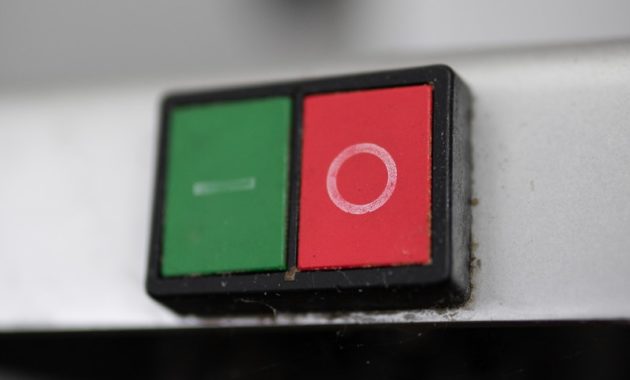
Dimming switches are unique because they restart every 120 seconds, but you’ll never notice it.
Let’s say you have a light bulb that lasts for about 10,000 hours.
If it costs $0.10 per hour to operate the bulb and your electricity rates are at an average of 12 cents/kWh, this costs you around $1,200 over its lifespan!
This essentially saves money on energy expenditures by modulating how much power is needed!
5) Start Line Drying Laundry
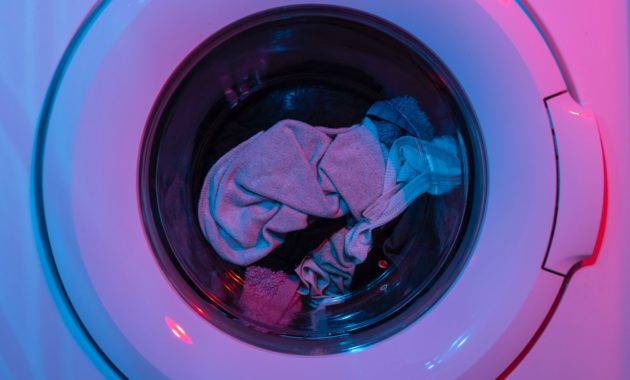
Turning the dryer off for a few hours would save you $0.30 per day, or roughly over $1,000 in energy costs each year!
Let’s take our average residential electric bill of 17 cents per kWh and multiply it by 3,000 watts (the wattage an appliance uses to operate).
That means your clothes will cost you about five times more if they’re dried at home than drying them professionally with just 100% humidity.
Suppose this pattern continues over an entire year with the same savings rate of approximately 54 days out of 365.
We will reduce our drying times by 50% (total savings amounting to another $32.85).
In that case, that is nothing but good news when heading into the summer months as well.
6) Keep Your Fridge and Freezer Full
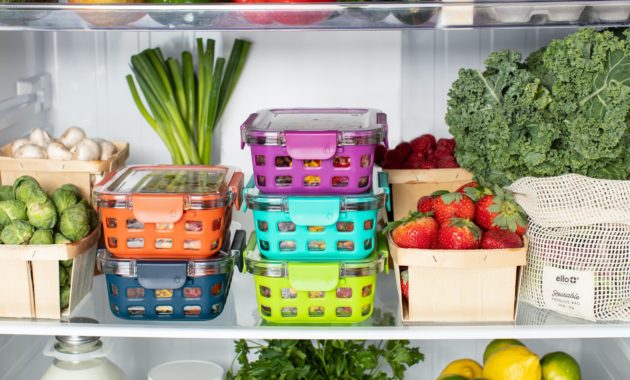
Let’s face it, the last thing we want to do is leave our refrigerators or freezers open. When you first enter your fridge.
For example, there may be a slight breeze flowing out of it and in this case, opening the door would make things worse–cooled air will escape!
Your refrigerator has to work harder now, not only to cool down food but also reconditioning cool air from outside into warm inside air temperature.
You probably know that when you open up your freezer, an icy blast hits you in the face and that means more energy is being used by the appliance until cooled temperatures are reached again.
But did you know about how much power these appliances use?
The Department of Energy reports on average 10% higher electricity usage due.
In a typical refrigerator door, there are two sets of hinges.
One is on the left side, and one is in front near the top. These swinging doors can contribute up to 7% of your refrigerators energy use!
We all know that a whole refrigerator will keep food fresh longer, but did you also know it can help cut its electricity usage?
Refrigerators often use more power when they are running on empty.
It turns out that the compressor is working harder to maintain temperature levels which causes heat increases and puts extra stress on other parts of the appliance.
A lot of us think about turning off our lights or unplugging chargers at night to save energy.
However, there’s one major appliance we might be forgetting: your fridge!
Keeping an eye on how much space in your fridge remains free can go a long way toward reducing those pesky monthly bills – so make sure you don’t overstock from now onward!
7) Keep Refrigerator Coils Clean
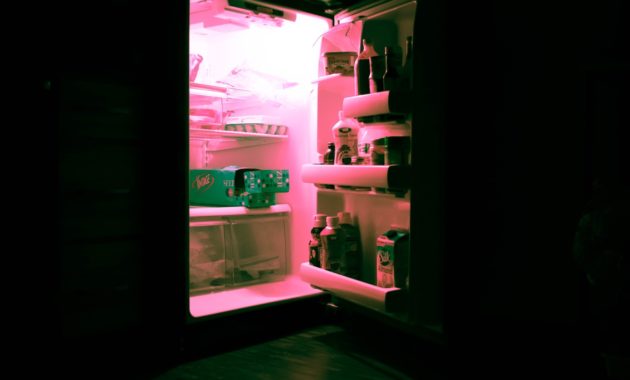
Did you know that keeping your refrigerator coils clean can help cut electricity costs?
Check and clean them every three months to lengthen the life of your fridge too.
The refrigerator coil is the part of your fridge that cools food.
It needs to be clean for it works properly and on top of everything else, you can save electricity by doing this!
8) Install and Use Ceiling Fans
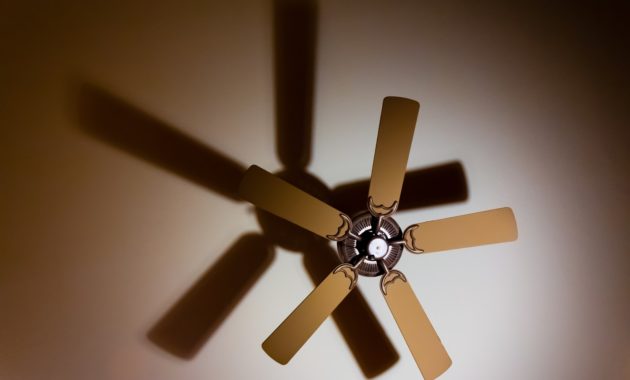
As air circulation leads to better sleep, the cool breeze must never stop.
With a ceiling fan or even your current ones on hand, there are many ways you can keep things nice and breezy without having to slide outside in just your PJs (which is kind of gross).
Many homes have them installed already if they were built within recent memory, but for those who don’t, installing one could be as easy as finding an electrician capable of taking care of such tasks.
The modern era has ushered in some pretty nifty versions with remote controls, so all you need to do is sit back and let “Annie” work her magic by cooling off our home, we’ll feel rejuvenated both.
Mentally and physically!
9) Get an Attic Ceiling Fan
You may not notice it, but your attic is hot.
One of the best ways to mitigate this heat and keep your home cool during the summer months is to install an attic ceiling fan.
These fixtures can extract up to 1,000 BTUs per hour from your house’s most neglected area – that means a lot less sweat on those scorching days!
An unassuming little spot in every homeowner’s abode, attics are often overlooked for their practical use as storage space or abandoned altogether when we move into a new apartment or house because they’re too difficult (or just plain old inconvenient) to access.
But did you know some homeowners install these humble spots as living spaces?
And while there are many options for transforming any part of your home, an attic can be both a relaxed and cosy spot to hang out in the summer.
10) Keep the Sun Out
This may sound like a no-brainer, but you would be surprised how many people don’t know that they can save on their electric bills by doing this.
You may not have thought about this, but there’s a whole lot of sun spilling in through your windows.
Close the blinds and curtains on the sunny side of your home to cut down that electric bill, for starters!
If you’re looking for long term savings, consider tinted window film.
It can lower heating costs by up to 50%.
11) Get Annual HVAC Maintenance
Air conditioners are a great way to keep your home cool and comfortable, but they can also cost you a lot of money.
That’s why owners must get annual maintenance done on their HVAC units to ensure efficiency at the lowest possible price.
Your HVAC system is designed to work hard on your behalf, but it still needs maintenance.
The inspection can identify any wear and tear that could be causing the unit to overwork itself-causing issues in the long run, like higher energy bills or a more expensive replacement for an already worn-out system.
The inspection will spot any signs of distress, so you don’t have to!
12) Clean HVAC Filters
Have you ever had your air filter changed? If not, then now is the time to start.
Air filters clean out dust and other debris in the air around your home or office space- this makes for a cleaner environment!
Changing an old filter with some new ones can make all of the difference in the quality of life at work or home.
In addition, changing these filters will also mean less stress on HVAC systems because they have fewer particles clogging them up, which means more efficiency over time.
13) Turn Off Your Stove
Who doesn’t want to save a few dollars on their electric bill every year?
Cooking with gas can help you decrease your electricity consumption, so heat dinner and eat it while helping the environment.
The first step in saving money is cooking off some of that energy from an oven or stove!
When you cook with a toaster oven, you save money on your electric bill, but the heat built up can continue cooking your food while it cooks off.
14) Use LED Lighting
You don’t need to go through the trouble of replacing all your incandescent bulbs with LED ones.
Just switch out some main rooms in your home for a more efficient, sleek lighting setup!
You can save money and energy by swapping out only your most frequently used light fixtures or just those taking up too much power- wasting electricity on empty spaces.
15) Wash and Dry Dishes by Hand
You can save money and time with your laundry by following a few simple steps.
The first step is to check the washer’s manual for water temperature settings, as this will vary depending on what kind of detergent you use.
Turn up the dial for hotter or colder temperatures accordingly based on preference and load size (always read instructions).
When washing new clothes that have been treated with chemicals from packaging like formaldehyde resin, make sure these things are rinsed out before adding soap, so bacteria doesn’t grow in those spots if they’re not rewashed later.
You’ll want to wash large loads less often because it uses more electricity than smaller ones do per pound – about ten times more when the cycle completes! So split them into two small loads to save some energy.
16) Turn Off Dishwasher Heat Dry
If you’re on a budget, it may be hard to justify spending the money on an expensive dishwasher.
Luckily, there are still ways that even if your dishes aren’t washed by hand as our ancestors did back in the day, they can save electric usage and water use too.
To maximise energy savings, turn off the dry heat selection on your dishwasher.
Many people are not aware that dishwashers have a dry heat function, but it wastes an enormous amount of energy.
Turning off this feature will save you up to $40 annually on your electric bill and reduce the overall environmental footprint for CO2 emissions by 1/4 cup per load!
17) Insulate Electrical Outlets
Ever noticed how sometimes you think your house is too cold, and vice versa?
It could be because of the tiny holes that are in electrical outlets!
This results in a change in the temperature inside or outside.
In addition, cool air can enter through these gaps when it’s hot out, making for an uncomfortable environment.
Did you know that there might be something wrong with your home right now just by using electricity alone?!
Electrical plugs leak heat into other parts of our homes and let in cooler temperatures from outdoors – what consequences does this have on us?
To improve your heating and cooling, insulate the outlets and switches.
18) Install Storm Doors
Installing storm doors is a great way to keep your home warmer in the winter and cooler in summer.
Homeowners are eligible for a $500 tax credit when they purchase them, so now you have an excuse to install one!
Storm doors are expensive, but the tax returns you get if you buy just two or three can make buying them worth it.
19) Do Energy Saving Landscaping
Planting trees around your home can help naturally insulate it and save you money on heating.
Planting a tree in the right spot of your yard is one way to protect yourself from high energy bills due to an inefficient air conditioning unit or excessive heat during the summer months!
Another way to be more eco-friendly with your landscaping is to decrease the amount of rock and cement you use.
20) Lower Your Hot Water Heater Temperature
You might not know that water heating accounts for over 1,000 kWh of electricity consumption per year.
Although this is an astonishing number to consider, there are ways you can conserve energy by installing a tankless or solar-powered hot water system in your home.
It’s estimated that 13% of your home’s electricity is dedicated to heating water.
To conserve water, you should set your water heater to under 140 degrees.
21) Use a Tankless Hot Water Heater
What’s the point of going to all that trouble for water heating when you can just get a tankless hot-water heater?
Switching saves money and energy.
ENERGY STAR estimates that tankless water heaters can save you $100 per year.
When it comes to your water heater, you might be better off replacing a decade-old unit with one that uses less electricity.
Tankless models are the best way for homeowners in Southern California to save money on their utility bills without sacrificing comfort or convenience.
22) Leverage Off-Peak Rates
Some cities and towns have reduced rates for electricity during certain hours of the day (off-peak hours).
To reduce your electric bill, take advantage of the cheaper rates.
For example, make laundry and dishwashing your priority at these times.
23) Buy ENERGY STAR® Appliances
You know the old saying, “you get what you pay for?”
Well, it’s more than just a cliche when buying ENERGY STAR certified appliances.
With these energy-efficient models costing less to run in the long-term and saving up on your electric bill every month as well, they’re worth investing in now!
For instance, an ENERGY STAR Washer can cut water usage per load by 10 gallons.
24) Cold Water for Laundry
Your washer will not just save water, but it can also help you lower your power bill.
If you change the setting to cold and use less detergent, this is a great way to cut back on both water and electricity consumption while still maintaining clean clothes!
There are many ways to put our planet at risk to live comfortably or keep up with fashion trends.
One of them uses hot water for washing items instead of opting for colder temperatures such as 60 degrees Fahrenheit (or 15 C).
This may seem like an inconvenience that’s too much work until considering how easy it could be if done right away from day one.
During the cycle, selection chooses the “Cold” option rather than selecting “Hot”, which most people do.
25) Do Only Full Laundry Loads
Laundry can be an expensive, time-consuming chore.
One way to save money on your electricity bill is by only doing laundry when you have a full load ready that needs washing.
This will cut down on the number of loads you have to do and decrease your energy usage.
26) Go Low-Flow During Showers
I can feel the water from my shower head invigorate me, both literally and figuratively.
The feeling of cool droplets running down your back is refreshing in this sweltering heat that has been plaguing our town for over a week now.
If you are trying to save water, you should buy a low-flow showerhead.
A typical high-quality one runs at about 2 gallons per minute, but some can be as slow as 1 gallon per minute!
A simple way to conserve more and spend less on your energy bill is by switching out your old showerhead for the new eco-friendly ones who only use up around 2.5 or even just 1.6 of those precious gallons in an ordinary home every day.
27) Use a Programmable Thermostat
One way to save energy is by being more intentional about turning on the heat or air conditioning.
For example, if we’re not going to be home for a few days, it might make sense for us to program our thermostat so that we don’t have any heating and cooling cycles happening while no one there.
One easy trick homeowners can do to cut down their electricity bills during times of day when they’re at work all day (or are away from their homes) is to program the temperature accordingly with some help from an intelligent thermometer like Nest Learning Thermostat.
This device will learn your typical schedule patterns and adapt them into its system – meaning less time wasted turning up the heat or AC unnecessarily.
28) Empty the Dryer Lint Trap
Your dryer might be a dusty little workhorse, but it doesn’t have to suffer.
Every few months, you should clean out the lint and scrub down your filter so that your clothes come in fresh-smelling every time!
29) Buy Some Dryer Balls
Contrary to popular belief, line drying your clothes is not always possible.
The harsh winter weather can make it difficult or even impossible depending on where you live and the kind of clothing you have.
Dryer balls are a great alternative in these cases because they use less energy than most dryers by cutting down air time considerably!
Dryer balls work wonders for those who cannot line-dry their laundry due to climate restrictions like cold winters here at UMD’s College Park campus and as an eco-friendly option when space permitting, which allows us to take care of our natural resources responsibly too!
30) Install Motion Sensors
Motion sensors can have an immediate and noticeable impact on your monthly electricity bill, primarily if you use them in conjunction with LED lighting.
Motion sensors use up less energy than a constantly-on light bulb, and they are more efficient because they only turn on when someone is close enough to get detected.
In some cases, motion sensors can be used in conjunction with LED lights which only use up about one watt of power.
This means it can take hours of use before the tiny LED lights have an impact on your electricity bill.
31) Employ Smart Strip Surge Protectors
Plugged in and turned off.
Power strips that sense when power is being used will turn plugs off automatically to save energy at a touch of a button, allowing for more control over electricity usage while still simplifying the process of turning things on or off.
This will help you eliminate phantom charges.
32) Use a Water Heater Timer
You might not have the luxury of being able to set a timer on your water heater.
Still, with this handy little gadget, you can enjoy uninterrupted warm showers and baths, all without having to worry about wasting energy.
The best thing is that it’s so easy!
Simply plug in the device into an outlet near your home appliance or adjustable stovetop element for maximum convenience; then just select one of three modes: “Normal,” which will keep things at a steady pace from morning through the night; “Economy” mode, which turns off while you’re asleep until reaching its preset time again later in the day when needed most; and finally, there’s also “Setback”, where users are given control over how many hours they want their heating.
33) LED Night Lights Instead
LED nightlights are better than traditional bulbs because they save you money, use less energy and last longer.
With LED lights, it is easy to see surroundings while still sleeping soundly with the light on!
LED nightlights to replace regular ones to save more cash in your wallet by not having to change them out every few months or so when they burn out like other types of lamps.
Unlike incandescent bulbs that waste most of their energy producing heat instead of light, LEDs have clean lighting throughout your home without giving off any unnecessary warmth into our environment, which can be difficult for those who suffer from SAD (seasonal affective disorder).
LED nightlights are cheaper and more energy-efficient than other types of lights.
They also typically last a lifetime.
34) Install Outdoor Solar Lighting
Light up your night.
Literally and figuratively, solar panels are the future of energy production for homeowners who want to save money on their electricity bill without investing too many inexpensive materials like metal or wood.
Solar power is a growing form of renewable energy that’s perfect if you’re concerned about our environment but don’t have time (or interest) to invest heavily into DIY projects around your house.
Plus, there aren’t any electrical cords involved with this system, so it’s easy to install and requires little maintenance!
35) Cover Refrigerated Food and Drink
Keep the cold in.
The average refrigerator operates at a loss of about $70 each year (because it’s constantly getting opened and closed).
However, if you cover the food in there with a blanket or towel when it’s not being used, then your refrigerator will use less energy.
36) Only Put Cooled Food in the Fridge
One way to keep your fridge from working too hard is by letting food cool before storing it in the refrigerator or freezer.
This will help reduce how often you need to use a defrosting setting, which uses more energy than other settings.
Warm food can make it difficult for a refrigerator to keep up with the work of regulating temperature.
37) Do Hot Water Heater Maintenance
To keep your pool clean and maintain a healthy water balance, it’s important to drain off any sediment build-up at least once every few months.
This is quickly done by opening up the side valve and letting everything flow out for about 10 minutes or so before closing back up again.
38) Insulate Your Hot Water Heater
You can insulate your water heater to cut household energy consumption by up to 30%.
For a small investment of $20-40, the first few feet of piping around your home’s water heater will be able to keep you warm with less wasted gas and electricity.
This step is worth it if you have kids or pets that use the bathroom shower because they’re constantly waiting for one family member after another, thanks in part due to their old 4 gallons per minute flow rate tankless outdoor faucet system, so at least now there won’t be any payback time when somebody tries taking a long leisurely bath.
39) Properly Insulate Your Home
Is your home as efficient and comfortable as it could be?
Proper insulation can reduce heating costs by up to 25 per cent, which is quite impressive. And if this isn’t enough.
Proper insulation also directly affects how much noise pollution you experience from outside sources such as traffic or passing trains!
If that weren’t enough, soot particle levels are reduced in the air thanks to better ventilation of indoor spaces through windows with shades drawn all day long (yay!).
According to Department of Energy estimates, 50-70% of energy consumption comes from heating and cooling your house.
Making sure yours is adequately insulated may save money both now AND down the road. It’s not just about saving cash, though: less heat escaping means more comfort.
40) Put that Second Fridge or Freezer in the Basement
Most homes have a fridge or freezer in the garage.
There’s always room for one more! If you’re not getting much use out of yours, find an alternative place to store it and make your home energy efficient with this simple idea.
Moving your second appliance away from its original location is easy as pie now that we’ve got tips like these fantastic ideas on how best to keep our houses cool without breaking the bank.
41) Use Lids When Cooking
If you’re cooking something on the stovetop, use a lid to cut downtime and save energy.
A pot of boiling water will heat up much faster when covered with a lid than if it’s left bare.
Similarly, simmering soup is best done in an uncovered pan.
Any added ingredients can cook through before serving while ensuring less evaporation from the liquid itself during long-term cooking periods like overnight or all day at work – which saves money by cutting back on food spoilage as well!
42) Stop Preheating Your Oven
Why do you need to preheat your oven?
Contrary to popular belief, it’s unnecessary for lengthy cook times.
Food benefits from a cold start in the oven because heat is more evenly distributed throughout the food.
There are fewer hot spots that can burn or overcook certain parts of whatever dish might be cooking!
43) Get More Use Out of Your Microwave
Microwaves are not only great for reheating leftovers or cooking a quick meal but also saving you money.
For example, if your microwave uses around 1,200 watts and an oven uses 2-4 thousand watts, things cook faster in the microwave by about ten times!
That means that food will take less time to heat up, which saves energy.
Plus, it burns calories more quickly, too, since higher temperatures cause molecules to move faster, thereby burning off those excess fats from our bodies quicker than with lower temps of 350°F or below (take slow cooker dishes).
44) Turn Your Lights Off
Turning off your lights will reduce energy consumption related to lighting, as well as heat.
This is because most light bulbs produce heat, and even CFLs don’t make a difference in cooling our homes.
45) Do Maintenance on Ducts and Vents
Avoid high energy costs by installing a duct sealant called butyl tape.
What can use it to stop leaks in torn ducts and near the furnace or poorly sealed vents, too!
You are preventing heat from escaping means less money spent on your electric bills for the heating and cooling of your home.
46) Turn Off Your Refrigerator Ice Maker
Turn off your fridge’s ice maker and save energy!
A 20 per cent decrease in the amount of power is used for refrigerators means that you can conserve more than just water.
With a little commandeer work, these appliances are rendered into machines with attractive ecological profiles.
47) Regulate Refrigerator Temp
With the right refrigerator temperature, you can cut down on your electricity costs.
The ideal fridge temp setting should be between 37 degrees to 40 degrees for most efficient use.
48) Cut Back Ironing Time
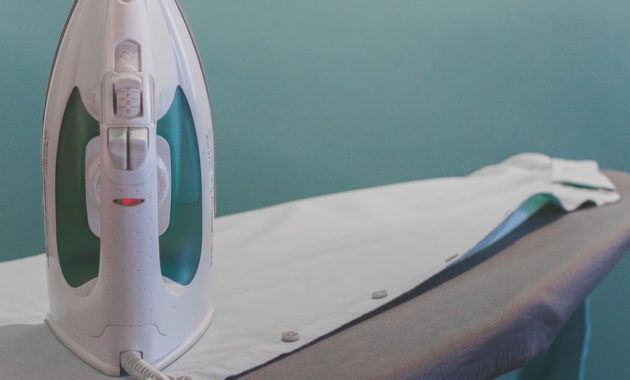
Ironing is an unpleasant task, but it’s not just a chore.
It can also be the difference between a crisp shirt and one that looks like you slept on it.
Ironing takes more than 800 watts to do well – in fact, and your iron will use about 2,000watts of power per hour!
This doesn’t sound too bad at first glance because most households are billed for 1kW or less each month.
But if you’re consistently using an iron every day, then 8 hours worth could cost as much as $8/month extra on your electric bill!
To avoid adding costs to our monthly budgets due to irons left plugged in all day when they aren’t being used (and potentially spoiling food),
Cut Your Electric Bill in Half Starting Today
You might be surprised to find that you can significantly reduce your electricity costs by implementing a number of these energy-saving tips together.
The first step is easy and not expensive – just buy LED light bulbs for all the lamps in your house!